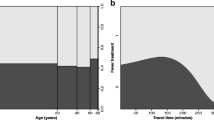Abstract
This paper attempts to estimate a disease specific demand function to study the determinants of utilisation of the services of a health care provider or a treatment regiment for malaria. The study adapts a multinomial logit framework to look at both facility characteristics and individual patient features on demand for malaria care in Ghana. The individual patient characteristics form a set of social indicators which can be used to discriminate or put into groups patients with respect to their choice of provider.
The study confirms the popular use of self-medication as a first choice of action in treating malaria. The choice of malaria care providers is found to be influenced by facility price, travel time, waiting time for treatment, education, age, sex and quality of care measured in terms of drugs availability. We further find that as income increases, the odds are in favour of self-medication when people get malaria.
The paper calls for the intensification of the minimum training given to chemical sellers and the expansion of the paramedical staff training to assist in health care delivery in Ghana. Provision of education would tend to increase utilisation of government health services and thereby improve the quality of life of the people.
Similar content being viewed by others
References
Agyepong, I. A.: 1991, Medical Treatment Choice in a Hill District of Eastern Nepal: A dissertation to the University of Liverpool School of Tropical Hygiene, Dept. of International Community Health.
Alderman, H. and P. Gertler: 1989, The substitutability of public and private health care for the treatment of children in Pakistan: Living Standard Measurement Study Working Paper No. 57 (The World Bank: Washington D.C.).
Akin, J.S., C. Griffin, D.K. Guilkey, and B.M. Popkin: 1986, ‘Demand for primary health care in Bicol region of the Philippines’, Economic Development and cultural Change 34(4), 755–328.
Amemiya, T.: 1985a, Advanced Econometrics (Harvard University Press, Cambridge, Mass.).
Amemiya, T.: 1985b, ‘Qualitative response models: A survey’, Journal of Economic Literature.
Asenso-Okyere, W.: 1992, ‘Disease and health in four selected areas in Ghana with special reference to malaria and schistosomiasis’, Health Social Sciences Research Unit Monograph Series No. 1 (Institute of Statistical, Social and Economic Research, University of Ghana, Legon).
Darton, H. and M. Over: 1991, Federal Republic of Nigeria Health Care Cost, financing and utilisation. Report No. 8382 (The World Bank: Washington D.C.).
Gertler, P., and van der Gaag: 1990, The Willingness to Pay For Medical Care; Evidence from Two Developing Countries (The John Hopkins University Press, Baltimore).
Greene, A. W.: 1993, Econometrics Analysis, second edition (Macmillan, N.Y.).
Lavy, V. and J. Quigley: 1993, ‘The willingness to pay for the quality and intensity of medical care’, LSMS Working Paper No. 94 (The World Bank: Washington D.C.).
Lavy, V and J-M. Germain: 1996, ‘Tradeoff in cost, quality and accessibility in utilisation of health facilities: Insights from Ghana’, In: R.P. Shaw and M. Ainsworth (eds.), Financing Health Services Through User Fees and Insurance. Case Studies from Sub-Saharan Africa. World Bank Discussion Paper No. 294, Africa Technical Department Series (The World Bank: Washington, D.C.).
Li Mingche M.: 1977, ‘A logit model of home ownershi’, Econometrica 45(5).
Ministry of Health: 1991, Malaria Action Plan (Epidemiology Division, Ministry of Health, Accra, Ghana).
Schmidt, P. and R. Strauss: 1975b, ‘Estimation models with jointly dependent qualitative variables: A simultaneous logit approach’, Econometrica 43, 745–755.
Waddington, C., and K. A. Enyimayew: 1990, ‘A price to pay, Part 2. The impact of user charges in the Volta Region of Ghana’, International Journal of Health Planning and Management 5(4), 287–312.
World Bank: 1989, Ghana, Population, Health and Nutrition Sector Review. West African Department, Population and Human Resources Division, Report No. 7597-GH.
Author information
Authors and Affiliations
Rights and permissions
About this article
Cite this article
Asenso-Okyere, W.K., Dzator, J.A. & Osel-akoto, I. The behaviour towards malaria care—a multinomial logit approach. Soc Indic Res 39, 167–186 (1996). https://doi.org/10.1007/BF00286972
Accepted:
Issue Date:
DOI: https://doi.org/10.1007/BF00286972




